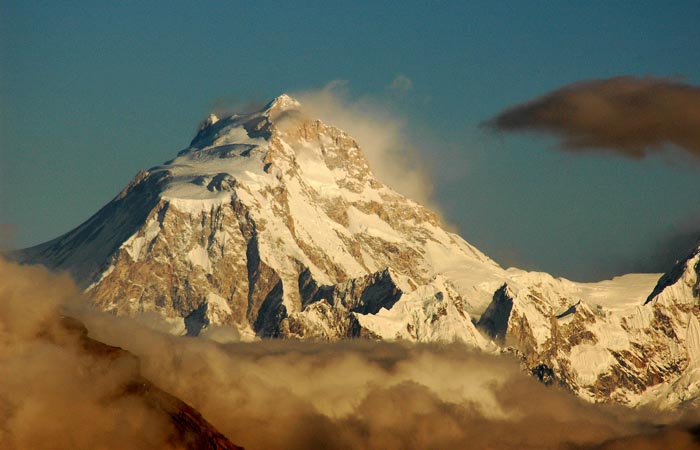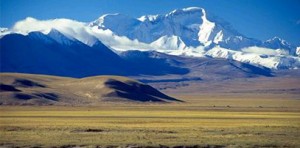Overview
The Phobjikha Valley, which is in the Himalayas at 3000 metres, is one of the few remaining glacial valleys in this region. It houses the hard-to-find black-necked cranes that have made it one of their migratory stopovers in the Tibetan Plateau in winter.
Gantey is a valley of astounding beauty in Bhutan. It has the Gangtey Gompa Monastery, the only Nyingmapa Monastery on the Black Mountains’ Western Side. This is not a difficult trek where one gets to pass through the villages of Gogona and Khotokha. The trek takes you through verdant meadows and fields, and forests of magnolia, rhododendron, and juniper.
It is one of Bhutan’s best low level treks.
This is an eleven-day package, out of which three of them are used for trekking from Gangey to Wangdiphodrang. The remaining days are used in excursion and visits to various short distant destination of historical, religious, natural and human interest of the Bhutanese.
Itinerary
You will be met at the airport by a representative of Yak Holidays and transferred to the hotel. After lunch, you will be taken to the National Museum at Ta Dzong, which was once an ancient watch tower, for a visit, and then to the political and religious centre of the valley, the Paro Rimpung Dzong.
We begin with a short drive to Satsam Chorten and then a short walk to Taktsang Monastery. After lunch, we drove to the ruins of Drukgyal Dzong, 16 km up the valley, from where we would experience the view of Mt. Jhomolhari (7,314 m). On our return home, we visit Kichu Lhakhang, built in 657 by the Tibetan King Sronsen Gampo. In the evening, we drive to the capital, Thimphu.
We begin the day with a visit to the National Memorial Chorten, built in 1974, then visit the few surviving nunneries, the National Library, and the Painting School of traditional art. After lunch, we drive to see the tallest statue of Bhuddha at Bhuddha Point, then Changangkha Lhakhang, Takin Preserve Centre, and the View Point. In the evening, it is a visit to Tashichho Dzong, the Handicraft Emporium, and then shopping for souvenirs in Thimphu.
We begin the day with a drive to Punacha via the Dochula pass. If the weather permits, we stop there for a view of the higher Himalayas. On the drive, we also stop at Chimi Lhakhang, the Temple of Fertility, built by Lama Drukpa Kuenley in the 15th Century, and then visit Punakha Dzong, situated between the Pho Chu and Mo Chu Rivers. It was built in 1637 by Shabdrung Ngawang Namgyal.
It is a two-hour drive to Gangtey, and on the way, we visit Wangduephodrang, built in 1638, followed by a visit to Gangtey Gompa Monastery, and finally, Phobjikha Valley, famed for the winter Black-necked Crane.
The trekking circuit begins with a slow climb up via fields and then down to Tselel, after which it is a gradual descent through juniper, magnolia, and rhododendron forests. Finally, we reach the village of Gogona after a short climb to rest for the night.
We begin with a gentle climb to Shobjula at 11,155 ft and then down to Khotokha, a wide valley and the summer home of the Sha people. Here we rest for the night.
We begin with a short climb to Mulaila pass at 9200 feet, then descend through the ever-changing flora and fauna until we reach the Wangdi Phodrang bridge, where the trek concludes.
We begin with a drive to Thimphu, the capital, where we witness archery matches and visit the philatelic office.
We begin the day with an excursion to the Cheri Monastery. After lunch, we drive to Paro. On the way, we visit Tachog Lhakhang and a Bhutanese farm house. In the evening, we are free to stroll around the town, taking photographs.
Early in the morning, you are driven to the airport for your departure flight.
US $2600 Per Person
Cost Includes
- All airport to hotel to airport transfers.
- All hotel stay in Paro and Thimphu.
- Local English speaking guide and porter(s).
- Staff insurances
- Use of trek pack (i.e. sleeping bag, down/fiber jacket, and duffel/kit bag).
Cost Excludes
- International airfare.
- Bhutan entry visa fee.
- Travel or trek insurance.
- Gratitude or tips (allow $3 per day per person).
The best times to trek in Bhutan are in the months of April and October. The weather is very unpredictable and the chance of a completely blue sky is very rare. You can do the low-altitude treks and other routes for other seasons as well.
Trekking in Bhutan requires you to be physically fit. It is not necessary for you to be in great shape. Any normal person without a disability can do the trek with relative ease. A trekker gains approximately 500 meters in a day. For strenuous treks like Snow Man Trek, Jumolhari, or Laya-Gasa Trek, you need to be mentally prepared besides being physically fit.
At least two of you must embark on any of the trekking expeditions in Bhutan.
No, you do not need any special equipment. All the necessary equipment for the trek is provided by the trekking company itself. Except you need to bring your personal belongings.
The following would be the things you should bring if you feel like it:
- Strong, comfortable trekking boots; water-resistant for the rainy periods, June to August
- Sunscreen cream
- Flash light
- raincoat (especially during rainy seasons, from June to August)
- Head gear/hat/cap
- sun and rain protection
- (During the trek, boiled water is available at all times.)
- In case of altitude sickness, take aspirin
- Warm clothes
- Lots of socks
Personal
- Strong normal clothing (seasonally appropriate)
- Cotton is preferred for summer, with woolen clothing for evenings and winter
- Strong, comfortable trekking boots
- Water resistant for the rainy periods (June to August)
Yes, it is absolutely safe as your security and personal protection are taken care of by the trekking agency, which is licensed by the Government of Bhutan. No, personal trekking or visits to the country are allowed without a package being booked by one. So, once you have paid for your package, you are a protected person within the country from any bodily harm. You have a local with you at all times.
It is requested that you get yourself insured for trekking in Bhutan. The insurance should cover medical treatment, theft and rescue—helicopter rescue operation:
There are no helicopters available in Bhutan. As such, immediate rescue by helicopter is not possible as there will be so many formalities involved in bringing a helicopter from India. While you are trekking in Bhutan, if you happen to fall sick, the guide will relay the message to us and we will act appropriately.
Except for Indians, Bangladeshis, and Maldivians, all other nationalities require a visa to enter Bhutan.
All visas are issued from Thimphu, and visas are only issued to tourists booked with a licensed local tour operator directly or through a foreign travel agent. Visas are issued only when you arrive in the country, either at Paro Airport or (if by road) at Phuentsholing, Gelephu, or Samdrup Jongkhar.
To enable us to process your visa on time on your behalf and get the visa clearance for you, your visa application must reach us at least 60 days before the date of your travel. The immigration department will then issue a visa authorization letter to enable you to board the Druk Air flight to Bhutan. The actual visa will be stamped on your passport when you arrive at the four entry points.
The visa fee is $40 USD.
For your booking to be processed, we will require a non-refundable deposit of $300, which can be made by bank transfer or online payment. The balance of payment should be made a week before your arrival. Booking should be made sixty days in advance for your visa to be approved by the immigration authorities of Bhutan.
The following information is needed to process your trekking package and visa to the country:
- Name exactly as it appears on the passport
- Passport number
- Expiry date
- Place of issue
- Nationality
- Date of birth
- Occupation
- Emergency contact names and phone numbers
- Photocopy of a passport
- Details regarding any medical or dietary requirements.
- Your arrival details (time, date, flight number, and airline)
The above information can be sent electronically via email attachment.
You will typically walk 4 to 9 miles (5 to 8 hours) every day. Some days may be rest days for impromptu exploration. In high and steep areas, you may move more slowly. You will carry only a light pack. All the rest are carried by donkeys, mules, and yaks.
Altitude sickness, often known as Acute Mountain Sickness (AMS), is a particularly important medical consideration while trekking in Bhutan. Altitude sickness means the effect of altitude on those who ascend too rapidly to elevations above 3000 meters. The initial symptoms of AMS are as follows:
- nausea
- vomiting
- Loss of appetite
- Insomnia or sleeplessness
- Persistent headaches
- Dizziness
- lightheaded
- confusion
- Disorientation
- drunken gait
- Weakness
- fatigue
- lassitude
- heavy legs
- slight swelling of hands and face
- Breathlessness and breathing irregularly
- Reduced urine output
These symptoms are to be taken very seriously. In the event of the appearance of any of the above symptoms, any further ascent should be reconsidered; otherwise more serious problems can occur, which can cause death, sometimes within a few hours. The only cure for altitude sickness is to descend to a lower elevation immediately. Acclimatization by ascending to no more than 300 to 500 meters per day above 3000 meters and proper rest are the best methods for the prevention of AMS.
You will have three meals each day, plus snacks. Breakfast usually includes a choice of toast, eggs, hot cereal, and hot beverages. Lunch may be prepared hot or served as a picnic, always with a choice of beverages. Dinner is a major meal with 5–6 main courses, usually including salad and/or soup, several vegetable dishes, and a meat dish. There will be a fruit dessert and hot beverages. We gladly cater to vegetarians. We combine elements of Western and Asian cuisines.
In a typical camping trek, each pair of trekkers will sleep in a spacious mountain tent, which is durable from rain, flies, and insects and is fully insect netted. The tent is fitted with foam mattresses.
Please have them contact at any of the following numbers:
Landlines – 977-1-4445475 or 977-1-4014609
Cells – 977-9851032108, 977-9849144717 or 977-9841250258
We frequently check our mails throughout the day, so you could write to us at: info@green-lotus-trekking.com







Recent Comments